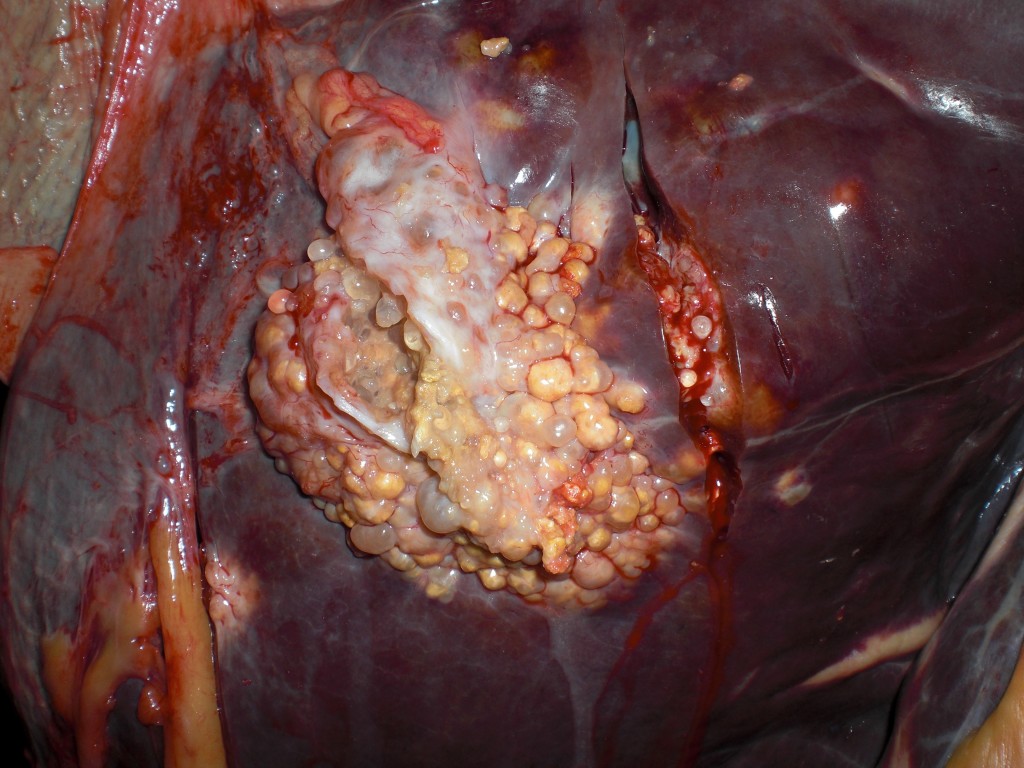09/07/2010
|
Bovine
2
Multiple vesicular lesions in the liver of a cow
Macroscopically the differential diagnosis of this type of lesion is:
- Echinococcus granulosus: cestode parasite of the small intestine of carnivores (dogs). The metacestode stage or hydatid cyst can be found in ruminants, normally in the liver or lungs. It usually consists of a single cyst, which can reach a considerable size and contain hydatid sand (protoescolexs). The cyst may break generating multiple cysts. These cysts can degenerate and develop necrotic caseous lesions.
- Echinococcus multilocularis: characterized by generating multiple cysts clusters , resembling grapes, as those seen in the image. It is a zoonosis since men can also act as intermediate hosts. This parasite is not endemic in Spain.
- Serous or congenital hepatic cysts: believed to be originated in embryonic biliary ducts.
- Cholangioma or biliary cystadenoma: bile duct neoplasm with cystic growth pattern, rarely described in ruminants.



2 comment(s)
Que pasa si consumo higado de res que hubiese tenido quistes arenosos.
Echinocccus granulosus puede causar enfermedad en personas, pero en el caso de ingerir alimentos contaminados por los huevos de la tenia que excretan los perros por las heces. En cualquier caso es siempre aconsejable destruir las visceras que presenten cualquier tipo de lesión, especialmente parasiticas ya que otros parásitos como Cysticercus bovis si que pueden generar patologia si se ingieren visceras contamiandas poco/mal cocinadas.